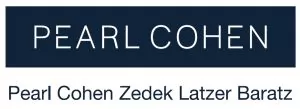Saying the district court's analysis under 35 U.S.C. § 101 "strays beyond efficient to the realm of insufficient," the U.S. Court of Appeals for the Federal Circuit vacated a district court bench judgment holding five asserted patents ineligible under § 101 and granting a motion to dismiss on that basis. In Realtime Data LLC v. Reduxio Systems, Inc., et al., Case No. 2019-2198, the Court remanded for additional consideration of patent eligibility an elaboration on the district court's reasoning. Of importance, however, the Court said, "Nothing in this opinion should be read as opining on the relative merits of the parties' arguments or the proper resolution of the case."
The asserted patents related, generally, to methods and systems for digital data compression. As the Court pointed out, some of the asserted patents and members of their patent families had been previously litigated. Relevant here, a Magistrate Judge in the Eastern District of Texas had recommended that the challenged claims of three of the asserted patents here and family members of the other asserted patents be deemed patent eligible at both Alice step 1 and step 2. The Federal Circuit pointed out that the district courts that rejected patent-ineligibility arguments in those cases had "significant experience in patent cases."
Here, Realtime alleged infringement of various combinations of the claims of the asserted patents by the various defendants. The defendants filed Rule 12(b)(6) motions arguing, inter alia, that all 159 claims of the asserted patents were patent ineligible under 35 U.S.C. § 101. Following a two-hour hearing, including a recess, focusing primarily on an exemplary claim in one of the patents, the district court announced from the bench that it was "prepared to rule on the pending motions" and would "not be issuing written opinions." Instead, the hearing transcript would serve as the district court's ruling on all pending motions.
The Federal Circuit noted especially that the district court's complete oral analysis of the patent eligibility of the 159 claims in the five asserted patents filled only five pages of transcript. At the end of those five pages, the district court declared all 159 claims of the five asserted patents patent ineligible. The district court also denied Realtime's request for leave to amend its complaints, saying, "[M]y practice has been to ignore [requests for leave to amend] and just to grant a motion to dismiss." The district court continued, "I think you can take your issues up with the Federal Circuit, and if I'm wrong, I'm wrong."
On appeal, Judge O'Malley, writing for the Court, said, "We hold, on the record presented to us on appeal, that the district court's short analysis is insufficient to facilitate meaningful appellate review." The Court specifically pointed to perceived "shortcomings" of the district court's process with which it said it was "particularly concerned," including: (1) a colloquy between the district court and Realtime indicating an apparent focus on factual questions unsuitable for resolution at the pleading stage and a failure to evaluate the claims as a whole; (2) the "unclear" process and "questionable" conclusion surrounding the district court's purported resolution of the "directed to" question of Alice step 1; (3) the failure of the district court to acknowledge prior written opinions, adopted by two district courts, addressing the patent-ineligibility question faced by the district court here; and (4) the district court's failure to expressly address or distinguish cited Federal Circuit precedent.
As for the colloquy, the Court noted that the district court's focus, rather than on whether the claims were "directed to" an abstract idea, was on whether claim limitations were "novel," with the district court later saying that one of the patents was "obvious," although not in the patent (i.e., Section 103) sense. Per the Court, considerations of novelty and nonobviousness are rarely issues appropriate for resolution on the pleadings. Moreover, per the Court, "Those concepts [ ] are not part of the Alice step 1 inquiry, they relate, if at all, to step 2." The Court said that nothing in the discussion between the district court and Realtime suggested that the district court considered the claims as a whole or, for that matter, seriously considered any claims beyond one claim of one patent. Per the Court, "With the little we have before us, it is hard, if not impossible, to put the district court's commentary out of mind. And, it is difficult to discern what part of the court's concerns with the claims were directed to which step of the Alice analysis."
As for the district court's Alice step 1 analysis, Second, to the extent the court purported to answer the Alice step 1 "directed to" question, the Court identified a "critical shortcoming" in the district court's analysis, namely, the failure to expressly indicate which, if any, claims were representative. Per the Federal Circuit, the district court did not tie its descriptions of the asserted patents to any specific claim or to clarify whether those descriptions were the abstract ideas that the claims are "directed to" under § 101. Noting that it is incorrect to consider whether a patent as a whole is abstract, the Court said that the district court's suspected failure to find representative claims and consider the "directed to" inquiry, was error.
Pointing to the meager nature of the district court's analysis on the record, the Court said, "Without more analysis, we cannot identify the district court's reasons for omitting key aspects of the claims and we cannot say whether that rationale was sound." Believing that the district court improperly equated the presence of an abstract idea with a conclusion that the claims are directed to such an idea, the Court said, "On remand, we caution the district court away from sweeping generalizations and encourage the court to carefully consider the 'directed to' question once more."
Referring to the prior § 101 analysis of the asserted patents in other courts, the Federal Circuit did not hold that those courts were correct in their assessment of the issue, or that the district court here was bound by those conclusions. Rather, per the Court, when deciding the motions to dismiss here, the district court should have, "at a minimum, provided a considered explanation as to why those judges were wrong." The Court said the analysis could have been express or implied. "Here, however, rather than take either approach, the court recited a series of legal conclusions and § 101 cases, without analysis. That simply was not enough."
As for the district court's apparent disregard of relevant Federal Circuit precedent in the record of its decision, the Court said, bluntly, "by not addressing even the one case held out as most comparable by Realtime, the district court did not do enough." In a footnote, the Court called this "an important failure," saying, "Assessments of patent eligibility are best done by reference to our numerous cases engaging in those assessments and gleaning insight from the resolutions." Noting that "there are often very fine lines between those cases and between what is patent eligible and what is not," the Court said that a detailed analysis of its relevant precedent and the record before the district court "is often needed if we are to appropriately assess the court's resolution of a § 101 challenge."
The Court concluded that, although a written order is not always necessary, "[t]his case is unique, however, in its paucity of analysis and the closeness of the underlying legal issue." The Court's conclusion that the district court must do more in this case "is reinforced, moreover, by the fact that through its abbreviated process the district court eviscerated five of Realtime's patents and completely resolved four separate district court actions."(In a footnote, the Court also expressed "concern" with the district court's blanket practice to deny requests for leave to amend the pleadings. The Court noted that factual allegations in a complaint can suffice to overcome Alice step 2 and district courts should, "as in any civil case," freely grant leave to amend to allege the necessary facts.)
The content of this article is intended to provide a general guide to the subject matter. Specialist advice should be sought about your specific circumstances.

